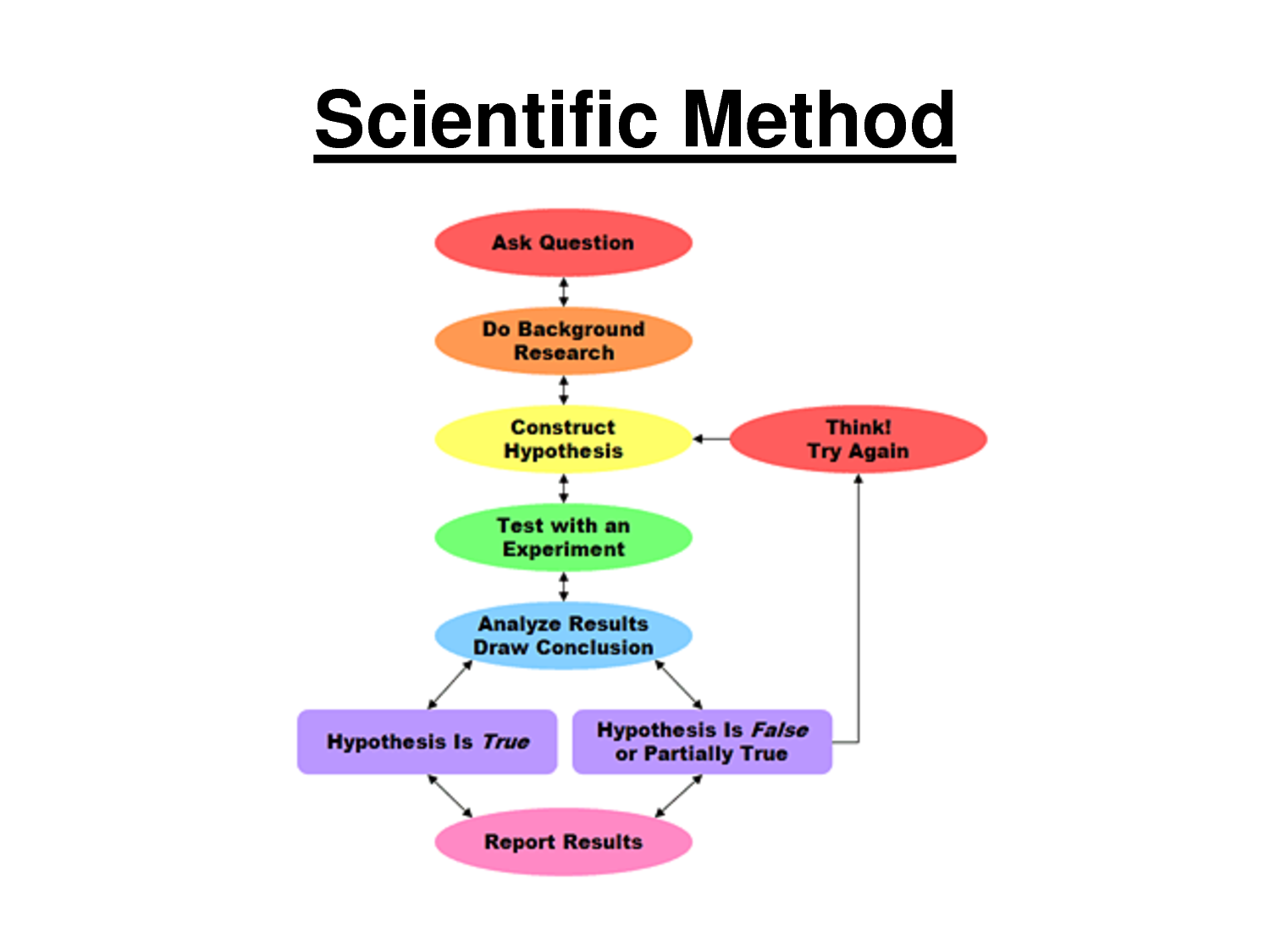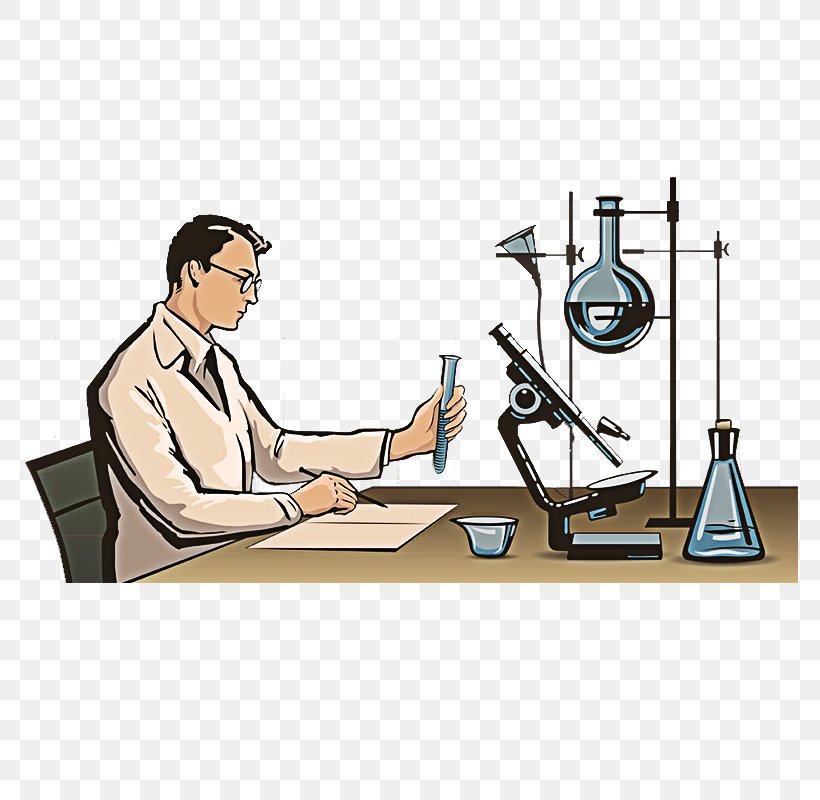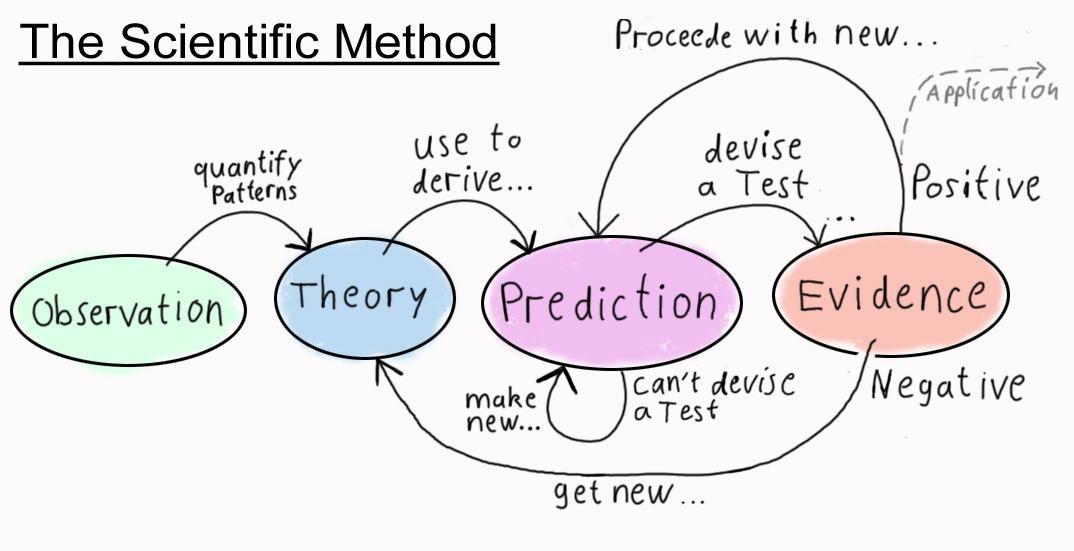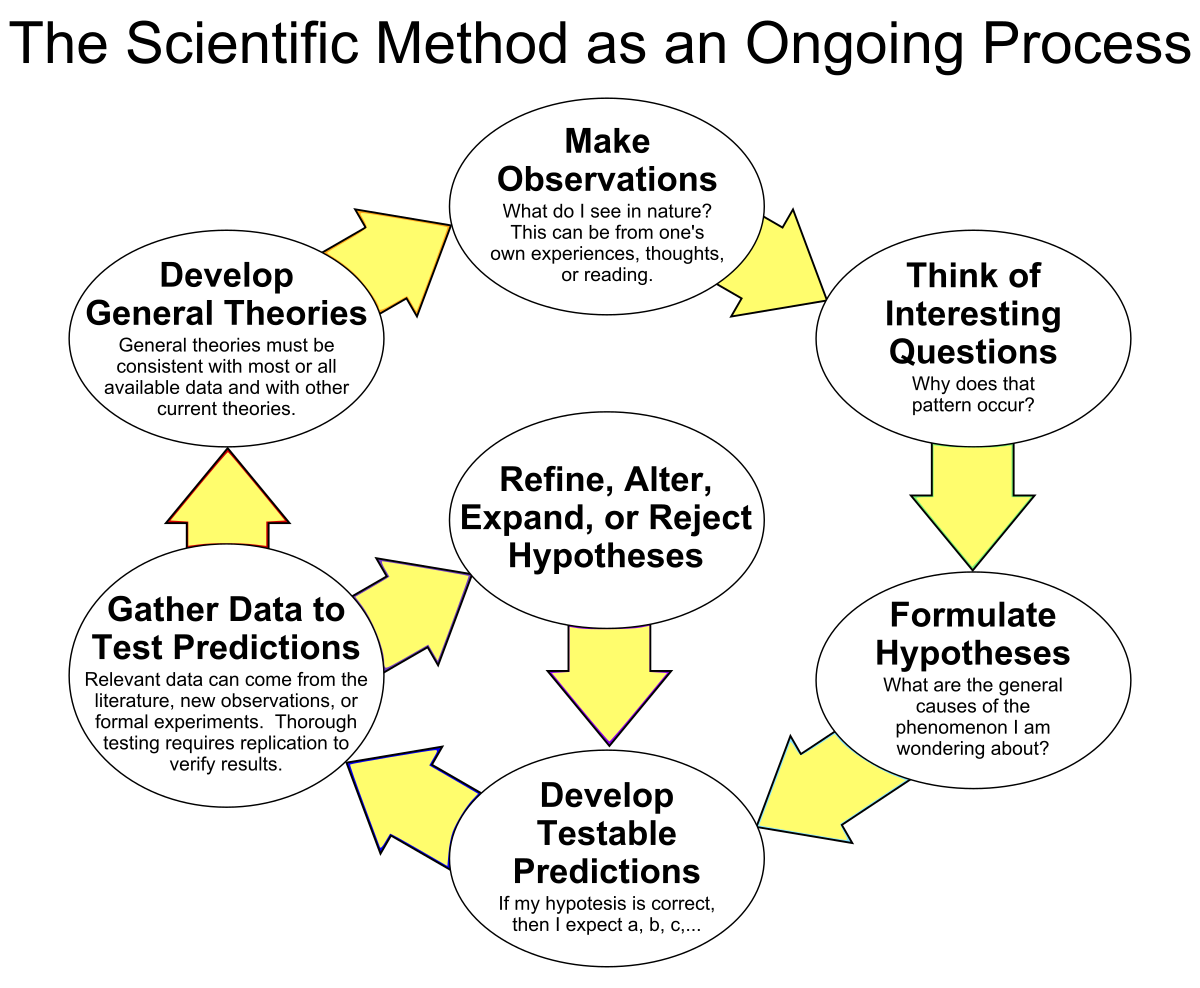Scientific Method Drawing
Scientific Method Drawing - Not sure how to apply the scientific method? If the conclusion means the hypothesis is rejected, then another hypothesis needs to. In designing an experiment, the specific question (or questions) that the experiment is meant to answer must first be clearly identified. Use the results to make new hypotheses or predictions. It can be illustrated using a diagram like this: Then a hypothesis is formulated to explain the phenomenon, which is used to make predictions about other related occurrences or to predict the results of new observations quantitatively. Web table of contents. Web experimentation is the heart of science. Flow chart of scientific method. Web the scientific method is an empirical method for acquiring knowledge that has characterized the development of science since at least the 17th century. Not sure how to apply the scientific method? Use the results to make new hypotheses or predictions. Web psychologists use the scientific method to investigate the mind and behavior. Finally, you've reached your conclusion. In designing an experiment, the specific question (or questions) that the experiment is meant to answer must first be clearly identified. Background research/ research the topic. Your conclusion should answer the question posed in step one. Form a hypothesis, or testable explanation. Conduct an experiment to test a hypothesis. First, an observation or question arises about a phenomenon. Background research/ research the topic. Web here’s how it works. First, an observation or question arises about a phenomenon. Teach them to use their senses to gather information and make notes—for example, what are they seeing, hearing, etc. The scientific method is used in all sciences—including chemistry, biology, geology, and psychology. Web updated on august 21, 2019. Conduct an experiment to test a hypothesis. It can be illustrated using a diagram like this: 1) asking a question about something you observe, 2) doing background research to learn what is already known about the topic, 3) constructing a hypothesis, 4) experimenting to test the hypothesis, 5) analyzing the data from the experiment. A hypothesis can take the form of an explanation. Web the scientific method is a systematic process involving steps like defining questions, forming hypotheses, conducting experiments, and analyzing data. It involves making observations, formulating a hypothesis, and conducting scientific experiments. Web the scientific method is a logical approach to understanding the world. Web psychologists use the scientific method to investigate. Then a hypothesis is formulated to explain the phenomenon, which is used to make predictions about other related occurrences or to predict the results of new observations quantitatively. Use the results to make new hypotheses or predictions. A hypothesis is fundamental to the scientific method. It minimizes biases and enables replicable research, leading to groundbreaking discoveries like einstein's theory of. 3.1 logical constructionism and operationalism. A testable explanation or hypothesis is then created. In designing an experiment, the specific question (or questions) that the experiment is meant to answer must first be clearly identified. Scientists ask questions, gather evidence, share ideas, and analyze data. Conduct an experiment to test a hypothesis. Web the scientific method is an empirical method for acquiring knowledge that has characterized the development of science since at least the 17th century. Web the scientific method is a process that includes several steps: Web the scientific method is a logical approach to understanding the world. This is when a hypothesis is either accepted or rejected. Jun 19, 2024. Logic of method and critical responses. 1) asking a question about something you observe, 2) doing background research to learn what is already known about the topic, 3) constructing a hypothesis, 4) experimenting to test the hypothesis, 5) analyzing the data from the experiment and drawing conclusions, and 6) communicating the results. Form a hypothesis, or testable explanation. A hypothesis. Scientists ask questions, gather evidence, share ideas, and analyze data. Now it is time to summarize and explain what happened in your experiment. We've reached the final step of the scientific method. Learn more about each of the five steps of the scientific method and how they are used. First, an observation or question arises about a phenomenon. Watch how we use the scientific method to explore the sci. Web experimentation is the heart of science. Your conclusion should be based solely on your results. The scientific method involves careful observation coupled with rigorous scepticism, because cognitive assumptions can distort the interpretation of the observation. The scientific method is a series of steps followed by scientific investigators to. Scientists use the scientific method because it is objective and based on evidence. The scientific method is a series of steps followed by scientific investigators to answer specific questions about the natural world. 1) asking a question about something you observe, 2) doing background research to learn what is already known about the topic, 3) constructing a hypothesis, 4) experimenting. We've reached the final step of the scientific method. Web table of contents. Learn more about each of the five steps of the scientific method and how they are used. A hypothesis is fundamental to the scientific method. Web the six steps of the scientific method include: Web the scientific method is a logical approach to understanding the world. A brief history of science. Teach them to use their senses to gather information and make notes—for example, what are they seeing, hearing, etc. Web in a nutshell, the scientific method works by making observations, asking a question or identifying a problem, and then designing and analyzing an experiment to test a prediction of what you expect will happen. 1) asking a question about something you observe, 2) doing background research to learn what is already known about the topic, 3) constructing a hypothesis, 4) experimenting to test the hypothesis, 5) analyzing the data from the experiment and drawing conclusions, and 6) communicating the results. 3.1 logical constructionism and operationalism. Logic of method and critical responses. Web experimentation is the heart of science. The scientific method involves careful observation coupled with rigorous scepticism, because cognitive assumptions can distort the interpretation of the observation. The scientific method has five basic steps, plus one feedback step: Your conclusion should answer the question posed in step one.Political Calculations Examples of Junk Science Falsifiability Fail
The Steps of the Scientific Method for Kids Science for Children
Scientific Method Definition and Examples
Science Scientist Scientific Method Research Design, PNG, 800x800px
Science Visualized • The Scientific Method Infographic by Jan Graf von...
Scientific method Wikipedia
Scientific Method Steps for Kids with Fun Printable Worksheets Kids
A schematic of the scientific method. Download Scientific Diagram
Formula for Using the Scientific Method Owlcation
Scientific Method Coloring Sheet
Scientists Ask Questions, Gather Evidence, Share Ideas, And Analyze Data.
Think About The Following Questions:
Get Them Wondering About Something That They Find Interesting Or Have A Passion For.
Watch How We Use The Scientific Method To Explore The Sci.
Related Post:


:max_bytes(150000):strip_icc()/scientific-method-p2-373335_V2-01-2f51a3a43c8e4be7900848f13c57eef4.png)






